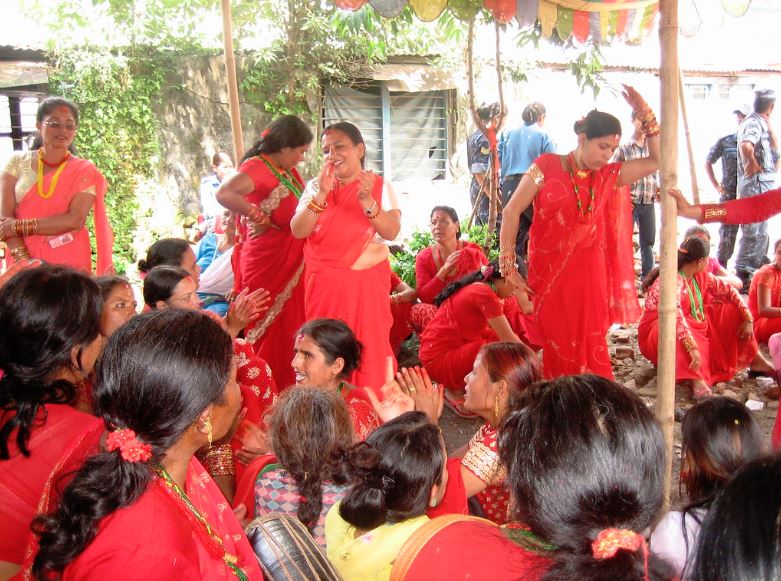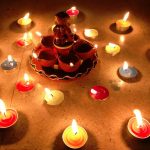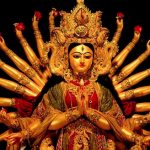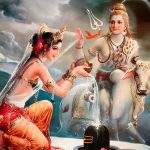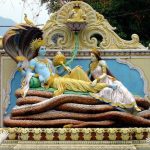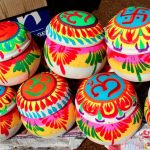Teej refers to a set of monsoon festivals or vrats observed mostly by women in North India. Most of these are held in honour of Devi Parvati and Lord Shiva.
The Vrats of the Monsoon Season
After the end of the long summer, the rainy season begins and provides a welcome relief from the sweltering heat. Many major Hindu festivals occur during this season, like Ganesh Chaturthi and Krishna Janmashtami.
The Teej festivals are a special set of monsoon festivals. The women of North India celebrate them to welcome the rains, and to pray for the welfare of their family. Women wear new clothes, undertake a fast and pray to Lord Shiva and Devi Parvati, for a good marriage, and for prosperity.
All the Teej festivals occur on the third day from the New Moon or Full Moon. Hariyali Teej is the first Teej Vrat, then comes Kajari Teej, and the Hartalika Teej.
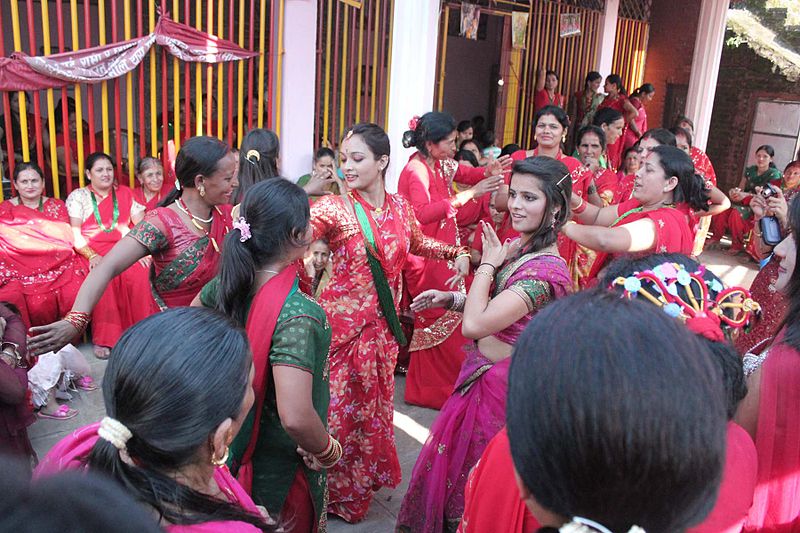
Hariyali Teej
On this occasion, women celebrate the Union of Devi Parvati with Lord Shiva after she had meditated on him through several births. Traditional belief states Parvati herself declared this day to be an auspicious day. Women who fast on this day and pray to Parvati would be blessed with a happy marital life.
Haryali Teej is the first one, and it welcomes the monsoon. It occurs on the third day of the Shukla Paksha in the month of Shravan (July-August). Haryali Teej means Green Teej. So, this refers to the land turning green with the coming of the rains.
Teej Vrat Vidhi
Women fast on this day. The day before, they visit their parent’s house. On the eve of the Hariyali Teej, they also receive a gift box called Srinjara from their parents. Unmarried women also celebrate this festival to pray for a good husband, while married women pray for the health of their husband, themselves, and their family.
The Shrinjara or Sindhara contains sweets, bangles, a sari, and other items. Women and young girls apply mehndi on their hands, then sing and dance. The songs are chiefly in praise of Lord Shiva and Goddess Parvati. Women offer the basket of food they get from their parents to Goddess Parvati. Women also fast throughout the day and break their fast in the evening after they complete the Teej Puja to Parvati.

The states of Haryana, Punjab, and Rajasthan celebrate Teej in different ways. In Punjab, women get together and celebrate the arrival of the monsoon season, and they perform the Giddha, a type of folk dance. In Haryana and Rajasthan, women celebrate this festival by wearing new clothes, singing, and dancing.
Fairs are organized at this time, and everyone participates in it. Boys fly kites and women ride on swings hung from trees. Women also receive a gift of gold jewellery from their in-laws on Hariyali Teej.
Kajari Teej
This festival occurs on the third day of the Krishna Paksha (dark phase of the moon) in the month of Bhadrapada. Boorhi Teej and Badi Teej are other names for this festival. Women pray to Lord Shiva and sing kajri folk songs, which are popular in Bihar, Uttar Pradesh, Rajasthan, and Madhya Pradesh. Women fast on this day too, and then break the fast after Teej Puja by consuming Satta, food made of multi-miller, flour.

Hartalika Teej
This teej occurs on the third day of the bright phase of the moon or Shukla Paksha in the month of Bhadrapada. Once, Parvati was born as the daughter of Himavan – the god of the Himalayan mountains. Her father wanted to get her married to Lord Vishnu. However, Parvati was in love with Lord Shiva.
So, her friend helps her escape from home. Parvati then makes a Shivalinga out of her hair and prays to Lord Shiva. He appears before her and they get married.
Women observe a Nirjala fast on this day, a fast without consuming even a drop of water, in honour of Parvati. The people of Uttar Pradesh, Rajasthan, Uttarakhand, Bihar, and Jharkhand celebrate this festival. It is also celebrated in Nepal.
Kajal Teej
This is the Teej of Telangana. It is mainly a festival for the Banjara community. Young girls pray for a good marriage and sow wheat in bamboo baskets. They water it regularly for nine days. The seventh day forms the festival of Thamoli. Then, on the 9th day, they take the now growing wheat along with a clay idol to a nearby pond and immerse them in it.
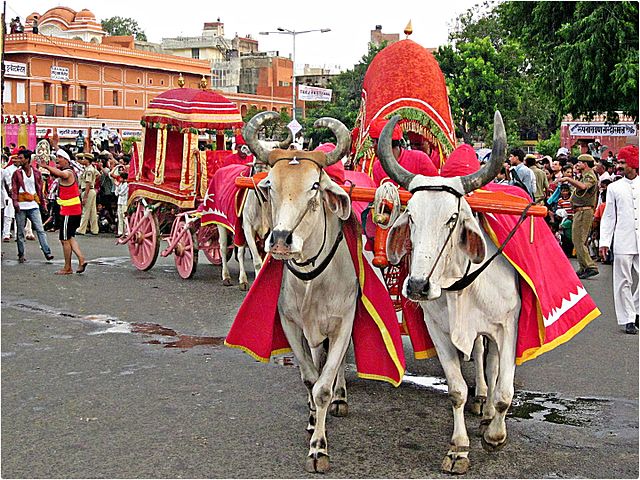
Kevda Teej
This is a teej festival of Gujarat, which coincides with the Hartalika Teej. Gujaratis celebrate it in a similar manner, with women praying to Parvati and undertaking a fast.
Jhulan Utsav
Hariyali Teej also coincides with Jhulan Utsav, the swing festival in honour of Radha and Krishna. The people of Mathura celebrate it with fervour. The festivities continue up to Krishna Janmashtami.
The Teej festivals welcome the arrival of the monsoon. Women observe Teej Vrat and pray to Goddess Parvati for the welfare and prosperity of their family. North and Western India celebrate different forms of Teej across two months.




